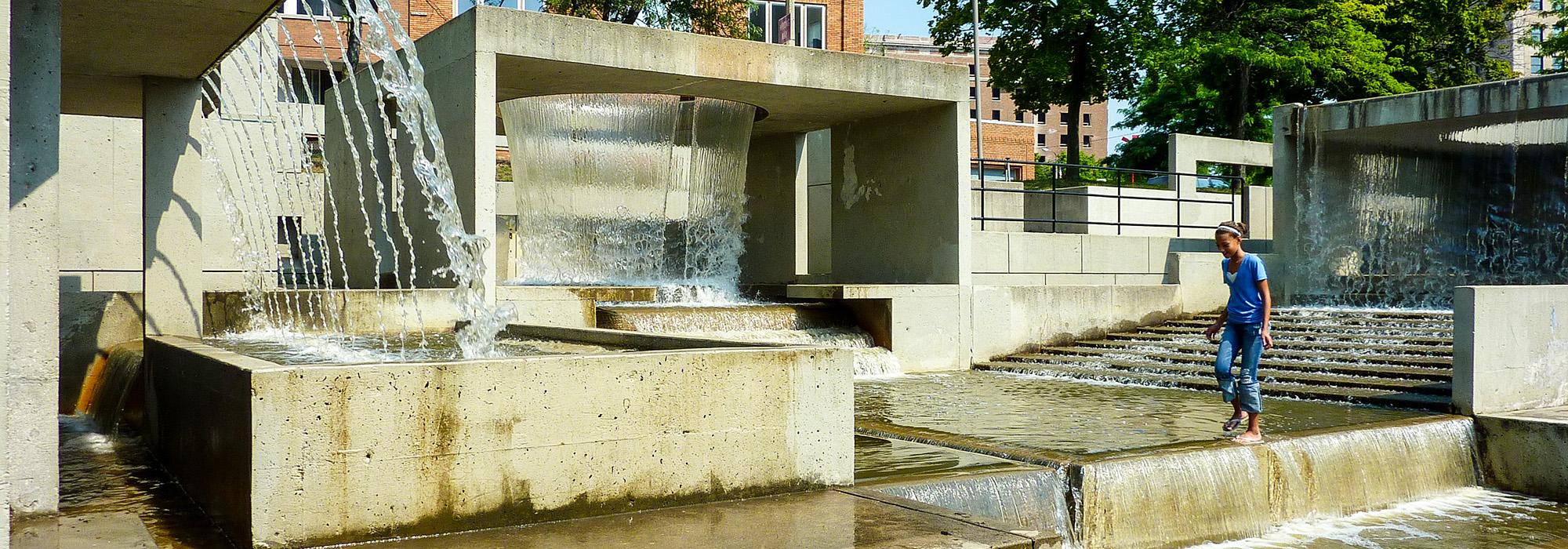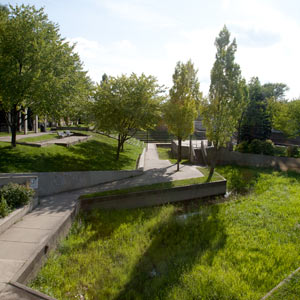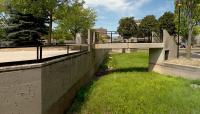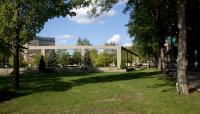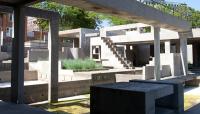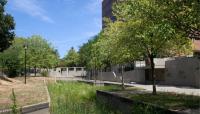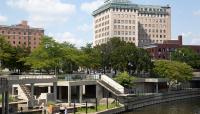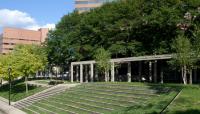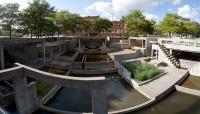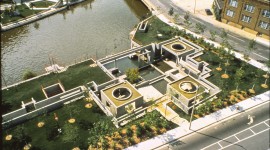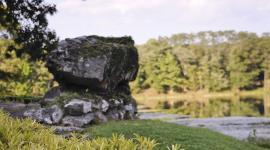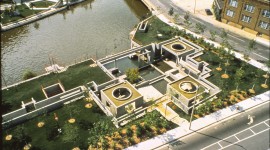Landscape Information
Between 1974 and 1979, Lawrence Halprin & Associates created a 1/3-mile linear park straddling the Flint River at the city’s center, an integral part of a flood control project undertaken with the U.S. Army Corps of Engineers. The project design team included Halprin staff landscape architects Satoru Nashita and John Cropper and architect Steven Holl (who was hired as a model maker in the office). Riverbank Park is characterized by angular walls and trapezoidal concrete walks and canals, softened by expanses of manicured lawn and large shade trees. While much of Halprin’s work is recognizably inspired by natural geologic forms, this park’s highly geometric and architectural design is distinctive. Heritage Park in Fort Worth, Texas, was being designed by Halprin’s office at the same time and shows a similar geometric approach.
The ten-acre park in Flint is an assemblage of five block-long, interconnected outdoor rooms set on distinct terraces that step down to the water's edge. One of the largest rooms, an arcaded amphitheater, has an angular, concrete stage that is separated from the grass-covered seat-steps by a narrow canal, giving it the appearance of an island. The Grand Fountain, located on the northern bank, is an inverted, stepped structure predicated on the Fibonacci series of proportions. Its cascading water wall is fed by an Archimedes Screw, a rotating spiral that lifts water from the river. As a whole, the park embodies Halprin’s ‘landscape-as-infrastructure’ approach to design, as the water features utilize both water from the river and stormwater runoff.



